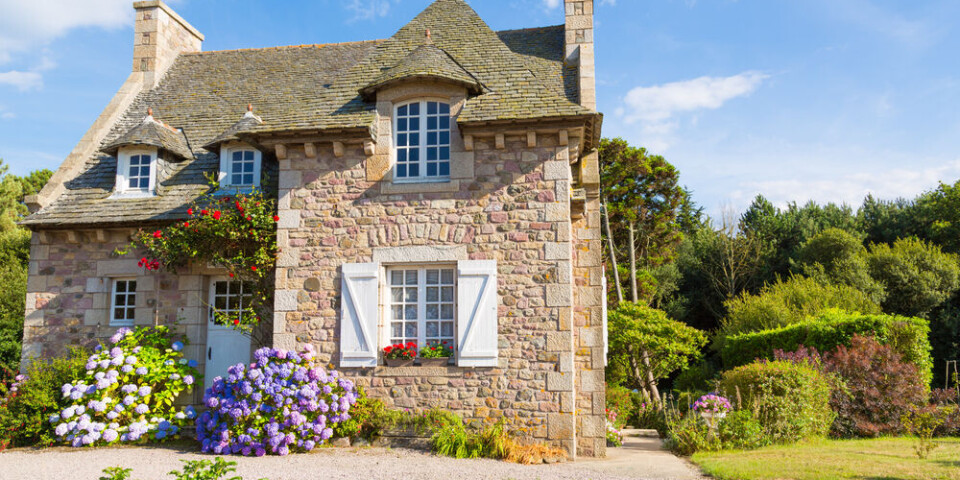-
Five famous historical French figures who were exiled to Britain
From Voltaire to De Gaulle, we share the stories of five exiles who fled across the Channel
-
This French hilltop village sits between heaven and earth
Art historian Julia Faiers unpicks the threads that weave together the Roman and medieval settlements of Saint-Bertrand-de-Comminges in the Pyrenees
-
La Fête Nationale: 14 facts about France's national holiday
The July 14 'Bastille Day' celebration features a military parade in Paris and means a day off work
Architecture of France: Bastides
French medieval new towns ageing well. Take a step back in time with some of France’s most beautiful villages

Bastides were built in the 13th and 14th centuries and were the equivalent of today’s new towns.
There are around 350 bastide towns or villages in France, mostly in Aquitaine, Midi-Pyrénées regions, and Aude department.
Many are well-preserved and are tourist attractions, with several classed among the Plus Beaux Villages de France.
Larousse and other dictionaries define them as a “small fortified village with a regular plan”, but historian Pierre Simon, of the Fédération des Bastides d’Aquitaine, said the first ones had no fortifications.
Created to meet the needs of a rising population, they were built around trade instead of monasteries, churches, or castles, and had the marketplace at the centre with the church to one side.
It was a rare period of rich and moderately peaceful times, with the international wine market developing and a network being built up to trade it and send it downriver to Bordeaux and on to England and other northern European countries.
The Albigensian Crusade against the Cathars had ended in 1229 and marked the defeat of the Count of Toulouse, Raymond VII, who then had to pledge allegiance to the king.
He was the first to support building the new towns, but needed Louis IX’s financial backing.
This was given only if the bastides had no fortifications, to avoid Raymond getting a new power base.
Mr Simon said: “The first sites, like that of Monflanquin, Lot-et-Garonne, were on hills, and so easier to defend.
“The second phase saw the construction of bastides next to rivers, to be on the wine trade routes to Bordeaux, such as Villeneuve-sur-Lot, Lot-et-Garonne.
“The third stage was just before the Hundred Years War, with tensions building between England and France, who ruled different parts of south west France at that time. So new bastides were built with defences, and many older ones now added fortified gateways and walls.
“Kings would finance the gateways and nobles the walls. Bastides were, in general, built with the backing of either the English or French king, depending on their situation.
“It was a model which worked and was copied throughout the south west.”
Mr Simon said bastides are recognisable by their layout, town charter and their position of local power: “They have a uniform grid structure, often with a marketplace in the central square and arcaded buildings around it. The ground floor would serve for commerce, the first floor for living and the second floor for storage.
“Parcels of land across the town would be identical, though perhaps bigger in the central square. Each town had administrative powers over the surrounding area.”
The charters laid down the rules for commerce and nominated a market day.
Bastides were built surprisingly quickly: “We don’t have much information about how they were built, but anyone who opted to move there only had a year in which to complete their new home.
“We don’t know if there were rules about their appearance, but they tend to be similar as they had to be the same size and were built quickly, leaving little time for originality. Moving to the town was attractive as town charters gave the bourgeois population beneficial rights and fiscal advantages not available anywhere else.
“There was a great deal of fighting and jealousy between local seigneurs, who did not want to lose people to a new bastide.” Building stopped with the Hundred Years War, when priorities for spending changed.
The plague in the 14th century also killed thousands, so there was no longer as much need for new housing.
Many bastides have kept their original layout and buildings, and several have been restored.
However, there are few defensive walls left, because a new population surge in the 18th century saw them dismantled to make way for expansion.
Monflanquin is a good example of an early bastide.
Built on a hill, its streets are in a grid, known as the Plan Aquitain.
At its heart is an arcaded square, with market day on Thursday, as it has been since the town was founded in 1256.
There is a network of narrow pedestrian streets, called carrérots.
In some, you pass under arches with rooms built above them.
All the streets are bordered by houses built in stone, brick and half-timbering.
Monflanquin was ruled by the French until the mid-14th century, when the English took over, until it was won back by the French during the Hundred Years War.
Monpazier, Dordogne, is one of the finest bastides, with its elegant square and arcades, and orthogonal layout – the streets are at right angles to each other.
Like Monflanquin, it has also had the same market day, Thursday, since the 13th century.
It was built with six fortified gate towers at the six entrances, but now has only three, although the town has otherwise remained virtually unchanged.
Both have museums exploring bastide history: the Bastideum at Monpazier, and the Musée des Bastides at Monflanquin.
























